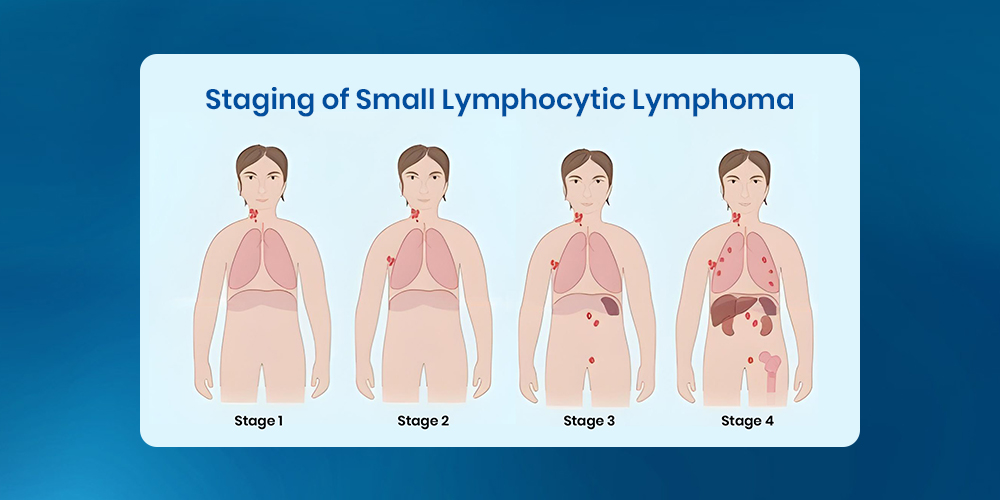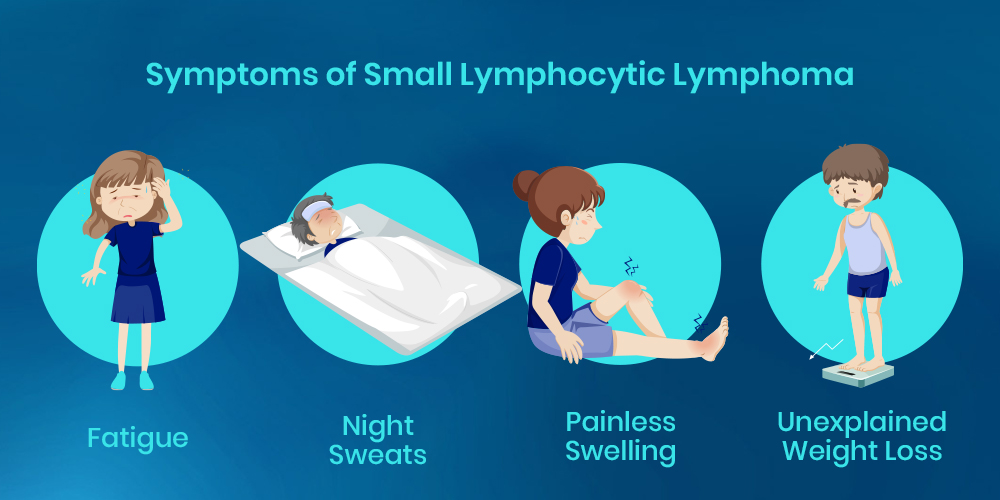
When the word “cancer” enters the conversation, it’s natural for concern to take over. For those diagnosed with Small Lymphocytic Lymphoma (SLL), a type of non-Hodgkin lymphoma that primarily affects B lymphocytes, the weight can feel overwhelming.
SLL accounts for about 2-3% of all adult lymphomas and typically affects people over the age of 60, with the average diagnosis around 65. But here’s the truth: while SLL is a serious condition, its slow-growing nature often allows for time to manage it effectively. The good news is that SLL is highly treatable, with new and well-researched therapies continually improving outcomes.
So, if you’re looking to understand SLL better—what it is, how it progresses, and how it can be treated—you’re in the right place.
What is Small Lymphocytic Lymphoma?
At its core, Small Lymphocytic Lymphoma (SLL) is a type of non-Hodgkin lymphoma that begins in the lymphatic system, a crucial part of the immune system. It develops from B lymphocytes, the white blood cells responsible for fighting infections. Essentially, what sets SLL apart is its slow-growing nature.
Unlike some aggressive forms of lymphoma, which demand immediate action, SLL tends to progress more gradually. Often, it develops with minimal symptoms for years. However, that doesn’t mean it’s harmless. It simply means that, in many cases, it gives patients time to manage the disease without feeling rushed into treatment.
The Slow Growth of SLL: A Double-Edged Sword
Initially, the slow-growing nature of SLL might sound like a relief. However, it’s important to remember that this doesn’t mean the disease is any less serious. While some cancers move quickly, causing rapid symptoms and requiring urgent treatment, small lymphocytic lymphoma can remain quiet for years. Often, this is a double-edged sword. On one hand, the gradual progression means there’s more time to make decisions about treatment. On the other hand, SLL may not be diagnosed until later stages.
Primarily, this slow pace is what leads doctors to categorize SLL as an indolent lymphoma. This term reflects its relatively calm nature early on. Even though the disease moves at its own pace, the need for early intervention remains important. Over time, SLL can evolve, and when it does, it’s crucial to have a treatment plan ready.
Is Small Lymphocytic Lymphoma the Same as Other Types of Lymphoma?
You may have heard of other types of lymphoma, like Primary mediastinal B-cell lymphoma (PMBCL). While both SLL and PMBCL originate from B lymphocytes, they have different behaviors and tend to occur in different parts of the body. PMBCL tends to develop in the chest, while SLL affects the lymph nodes and spleen.
The Staging of Small Lymphocytic Lymphoma
When it comes to SLL, understanding the stage of the disease is essential to determining the best treatment approach. Therefore, staging helps doctors identify how far the cancer has spread and guides decisions about therapy. The staging system used for SLL is the Lugano classification, which ranges from Stage 1 to Stage 4. Each stage describes the extent of cancer spread within the lymphatic system or to other organs.
- Stage 1 means that the cancer is confined to one group of lymph nodes or a single organ.
- Stage 2 indicates cancer involvement in multiple lymph node groups on the same side of the diaphragm.
- Stage 3 suggests that the cancer has spread to both sides of the diaphragm or includes the spleen.
- Stage 4 represents the most advanced stage, where cancer has spread to organs outside the lymphatic system, such as the liver or lungs.
For those with Stage 4 small lymphocytic lymphoma, the treatment approach becomes more intensive. This is because the disease has reached a point where it’s impacting vital organs. But even at this stage, advances in treatment give patients options to manage the condition and prolong life.

Recognizing Small Lymphocytic Lymphoma Symptoms
The symptoms of SLL can be subtle, and in many cases, they may not appear for years. Some people may live with the disease for quite some time without experiencing any obvious signs. However, when symptoms do present, they can include:
- Painless swelling in areas like the neck, armpits, or groin, where lymph nodes are located
- Fatigue or an overall feeling of tiredness
- Unexplained weight loss or a noticeable change in appetite
- Night sweats and fever, often without an obvious cause
These symptoms aren’t always indicative of SLL, but they are key signs that something might be wrong. Consequently, if you notice them, it’s important to speak with a doctor. Catching SLL early, when it’s still in the early stages, can significantly impact treatment outcomes.

The Cause and Risk Factors of SLL
Understanding the risk factors and potential causes of SLL can help provide insight into how it develops. While the exact cause is still unclear, several factors increase the likelihood of developing this disease.
Genetic Factors:
Firstly, a family history of small lymphocytic lymphoma or other forms of lymphoma increases your chances of developing the condition. Certain genetic mutations in B lymphocytes can lead to abnormal growth, triggering follicular lymphoma.
Immune System Conditions:
Secondly, individuals with weakened immune systems, such as those living with HIV or autoimmune diseases, may be more prone to SLL. Immune system dysfunction can interfere with the body’s ability to control abnormal cell growth.
Environmental Exposure:
Thirdly, long-term exposure to certain chemicals—like pesticides, herbicides, and industrial solvents—can also increase the risk of lymphoma. Similarly, smoking is a known risk factor.
Chronic Infections:
Lastly, infections, such as Epstein-Barr virus or hepatitis C, have been linked to lymphoma, as they can cause changes in B lymphocytes that lead to uncontrolled growth.
While these factors increase the risk, it’s important to remember that SLL can develop without any clear warning or predisposition.
Diagnosing Small Lymphocytic Lymphoma
Mainly, the diagnosis of SLL involves a combination of physical exams, blood tests, and imaging studies. Doctors begin by reviewing the patient’s medical history and performing a physical examination, checking for swollen lymph nodes, an enlarged spleen, or liver. Blood tests are used to measure lymphocyte counts and look for abnormalities like chronic lymphocytic leukemia.
Furthermore, imaging studies like CT or PET scans can provide clear pictures of the lymphatic system, showing any enlargement of the lymph nodes in neck or involvement of organs like the spleen. Additionally, a biopsy—removing a small piece of tissue from a swollen lymph node—is the final step to confirm the diagnosis. Furthermore, it helps track specific cellular abnormalities that define small lymphocytic lymphoma.
Treatment Options for Small Lymphocytic Lymphoma SLL
Small cell lymphocytic lymphoma treatment depends on the stage of the disease, the severity of symptoms, and individual patient factors. While some people with SLL may not require treatment right away, others may need a more active approach. Commonly, options for treatment include:
Watchful Waiting:
For those who have no symptoms, doctors may recommend a “watch and wait” approach. This involves regular check-ups and monitoring the disease’s progress without immediate treatment, which allows patients to avoid unnecessary side effects if the disease is stable.
Chemotherapy:
When symptoms arise, chemotherapy may be used to target and destroy cancerous cells. It can shrink tumors and help control the spread of SLL.
Targeted Therapy:
These treatments focus on specific molecules that drive the growth of SLL cells, reducing the impact on healthy tissue. Medications like Bruton’s Tyrosine Kinase (BTK) inhibitors have shown success in managing SLL with fewer side effects compared to traditional chemotherapy.
Immunotherapy:
Drugs like rituximab help stimulate the body’s immune system to target and destroy lymphoma cells. This approach is often used in combination with other therapies for better outcomes.
Stem Cell Transplants:
For advanced or refractory cases, stem cell transplants—where damaged bone marrow is replaced with healthy stem cells—can provide a potential cure. However, this option is usually reserved for younger patients or those in good overall health.
Clinical Trials for Oncology
Clinical Trials for Oncology are vital to advancing the treatment of SLL. These trials test new drugs, therapies, and treatment combinations to discover better ways to treat lymphoma. Participating in a clinical trial opens the door to cutting-edge treatments that could offer hope when traditional options fall short.
Additionally, ongoing research in diseases like Diffuse Large B Cell Lymphoma Clinical Trials is helping scientists better understand how different therapies impact lymphoma and improve patient outcomes.
Conclusion: Navigating the Path Forward with SLL
Living with Small Lymphocytic Lymphoma is not without its challenges. But with early diagnosis, advanced treatment options, and ongoing clinical research, it’s possible to manage this disease effectively. Whether you’re newly diagnosed or have been living with SLL for years, remember: there is a path forward. With a personalized treatment plan and the support of your healthcare team, SLL can be managed. The key is staying informed, staying engaged in your care, and never losing sight of the hope that better treatments are always on the horizon.







